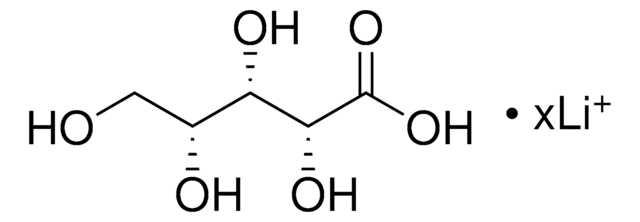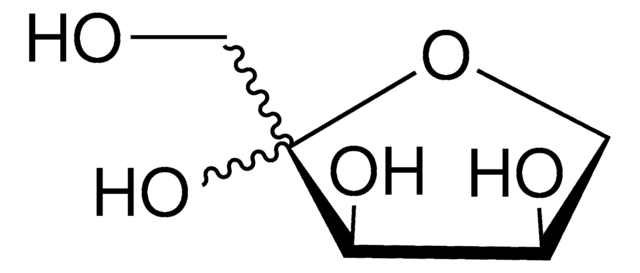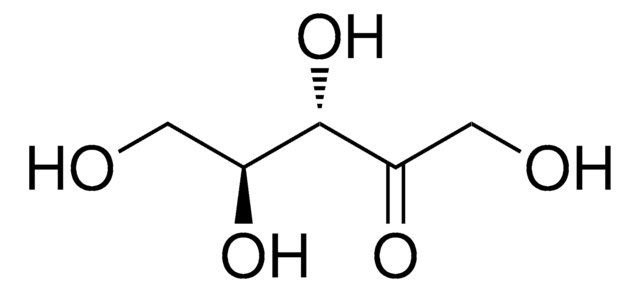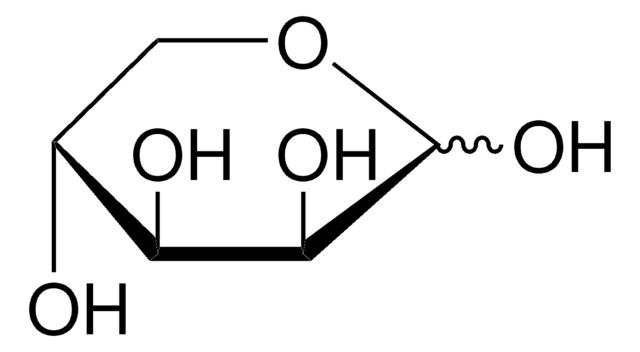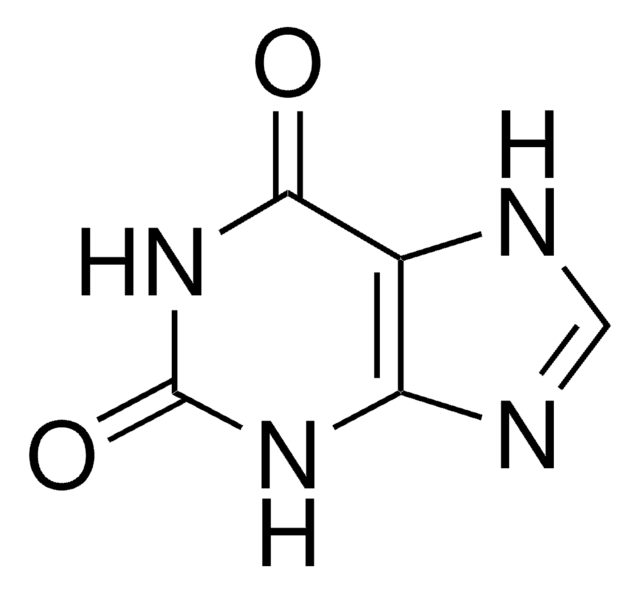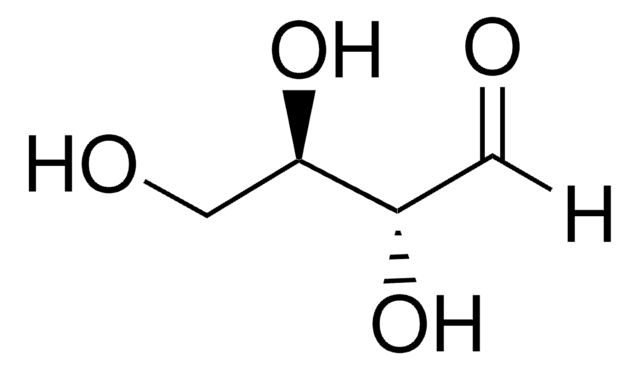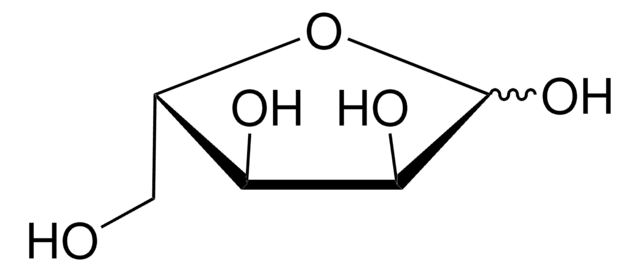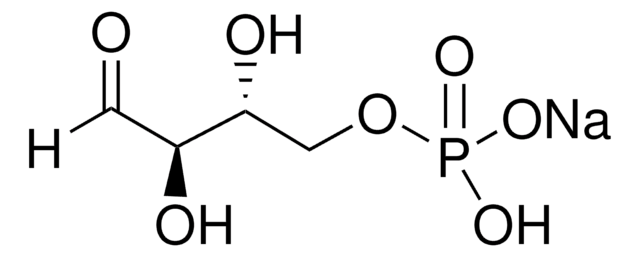Alle Fotos(1)
Wichtige Dokumente
X4625
D-Xylulose
≥95% (HPLC), syrup
Synonym(e):
D-threo-Pentulose
Anmeldenzur Ansicht organisationsspezifischer und vertraglich vereinbarter Preise
Alle Fotos(1)
About This Item
Empirische Formel (Hill-System):
C5H10O5
CAS-Nummer:
Molekulargewicht:
150.13
Beilstein:
1723052
MDL-Nummer:
UNSPSC-Code:
12352201
PubChem Substanz-ID:
NACRES:
NA.25
Empfohlene Produkte
Qualitätsniveau
Assay
≥95% (HPLC)
Form
syrup
Methode(n)
HPLC: suitable
Farbe
faintly yellow
Löslichkeit
water: 50 mg/mL, clear, faintly yellow to yellow
Lagertemp.
−20°C
SMILES String
OCC1(O)OC[C@H](O)[C@H]1O
InChI
1S/C5H10O5/c6-2-5(9)4(8)3(7)1-10-5/h3-4,6-9H,1-2H2/t3-,4+,5?/m0/s1
InChIKey
LQXVFWRQNMEDEE-PYHARJCCSA-N
Suchen Sie nach ähnlichen Produkten? Aufrufen Leitfaden zum Produktvergleich
Biochem./physiol. Wirkung
D-xylulose is a monosaccharide, converted from xylitol in the glucuronate pathway.
Sonstige Hinweise
To gain a comprehensive understanding of our extensive range of Monosaccharides for your research, we encourage you to visit our Carbohydrates Category page.
Lagerklassenschlüssel
10 - Combustible liquids
WGK
WGK 3
Flammpunkt (°F)
Not applicable
Flammpunkt (°C)
Not applicable
Persönliche Schutzausrüstung
Eyeshields, Gloves
Hier finden Sie alle aktuellen Versionen:
Besitzen Sie dieses Produkt bereits?
In der Dokumentenbibliothek finden Sie die Dokumentation zu den Produkten, die Sie kürzlich erworben haben.
Kunden haben sich ebenfalls angesehen
Tien Anh Ngo et al.
Journal of the American Chemical Society, 138(9), 3012-3021 (2016-02-18)
We report the construction of an artificial enzyme cascade based on the xylose metabolic pathway. Two enzymes, xylose reductase and xylitol dehydrogenase, were assembled at specific locations on DNA origami by using DNA-binding protein adaptors with systematic variations in the
Misun Lee et al.
Biochemistry, 56(45), 5991-6005 (2017-10-19)
Xylose isomerase from Piromyces sp. E2 (PirXI) can be used to equip Saccharomyces cerevisiae with the capacity to ferment xylose to ethanol. The biochemical properties and structure of the enzyme have not been described even though its metal content, catalytic
Jenny P Glusker et al.
Acta crystallographica. Section D, Biological crystallography, 66(Pt 11), 1257-1261 (2010-11-03)
A description is given of the results of neutron diffraction studies of the structures of four different metal-ion complexes of deuterated D-xylose isomerase. These represent four stages in the progression of the biochemical catalytic action of this enzyme. Analyses of
Ye-Wang Zhang et al.
Applied microbiology and biotechnology, 90(2), 499-507 (2011-01-20)
Rare sugars have many applications in food industry, as well as pharmaceutical and nutrition industries. Xylitol dehydrogenase (XDH) can be used to synthesize various rare sugars enzymatically. However, the immobilization of XDH has not been performed to improve the industrial
Nichole F Huntley et al.
PloS one, 13(10), e0205913-e0205913 (2018-10-26)
It is important to understand if, and to what extent, the pig can utilize xylose as an energy source if xylanase releases free xylose in the small intestine. The experimental objectives were to determine the effects of industry-relevant dietary xylose
Unser Team von Wissenschaftlern verfügt über Erfahrung in allen Forschungsbereichen einschließlich Life Science, Materialwissenschaften, chemischer Synthese, Chromatographie, Analytik und vielen mehr..
Setzen Sie sich mit dem technischen Dienst in Verbindung.